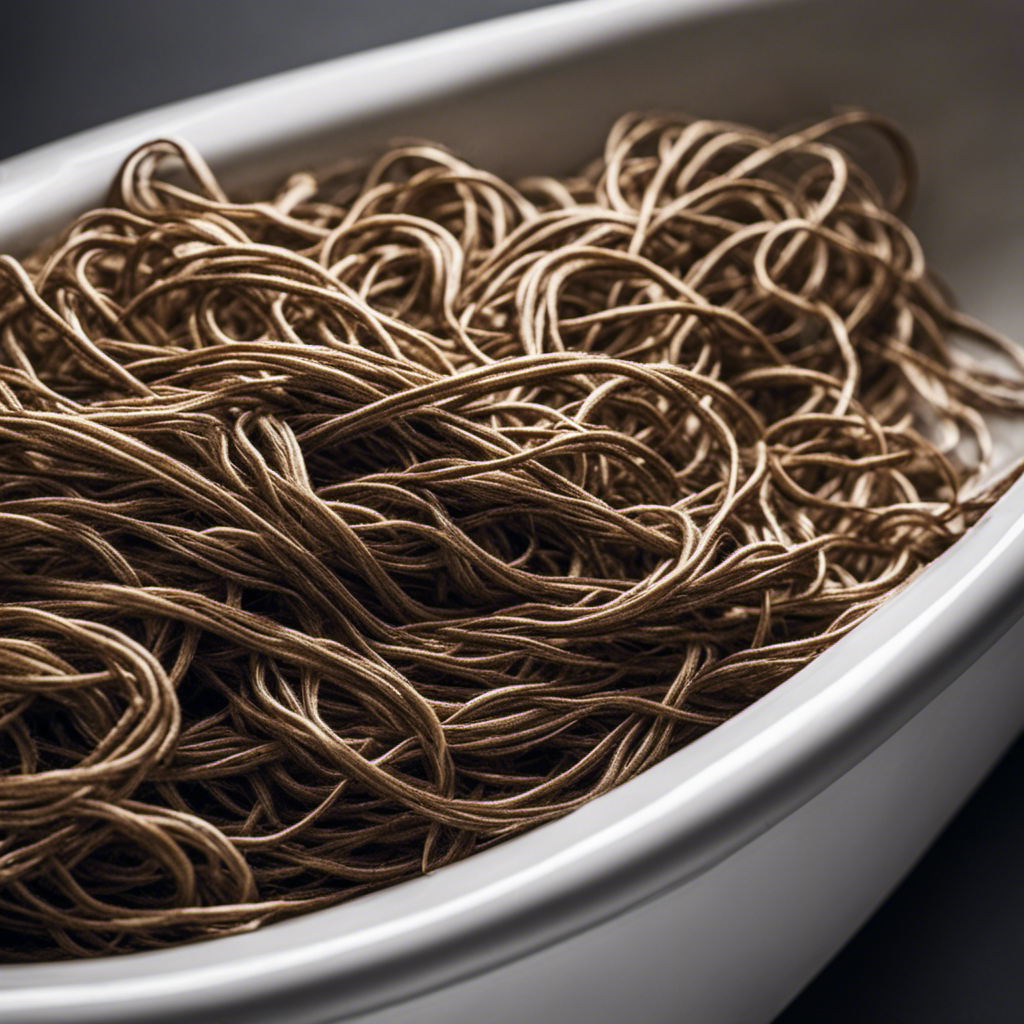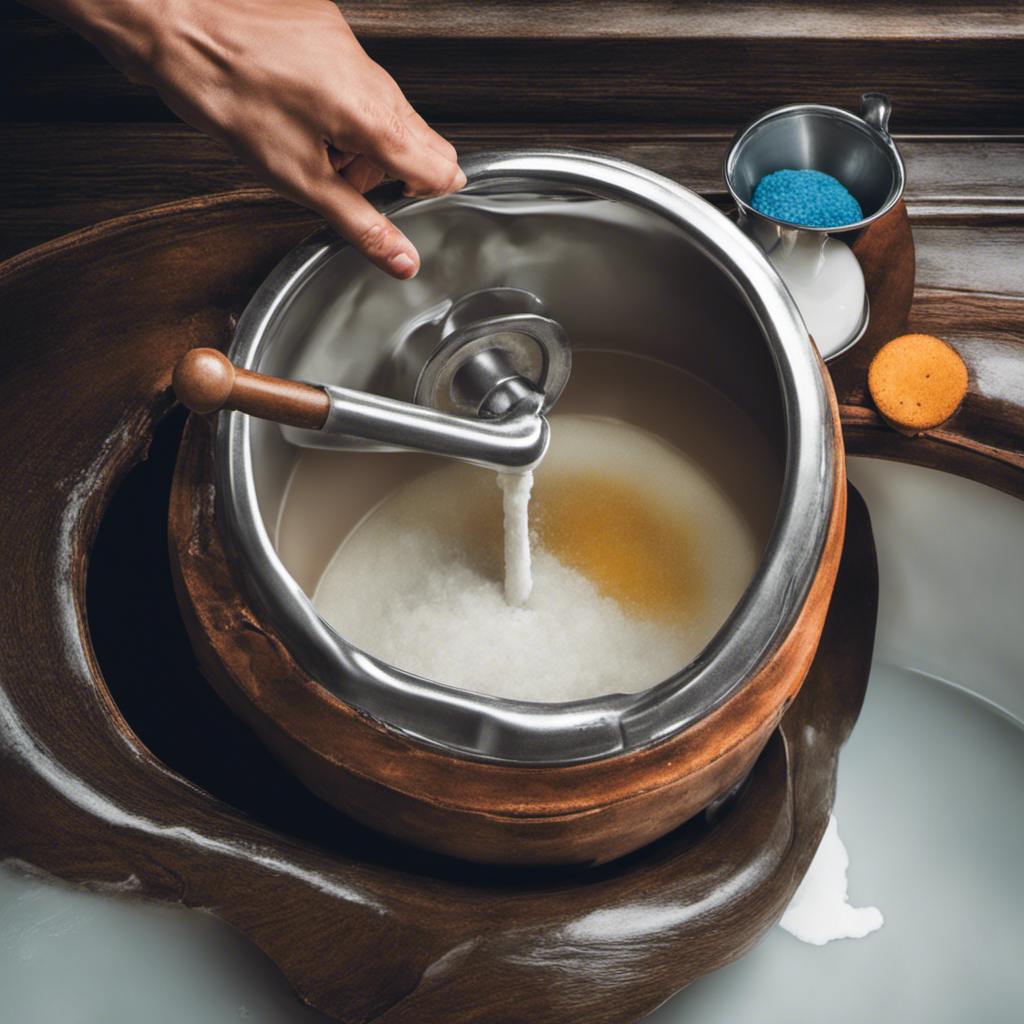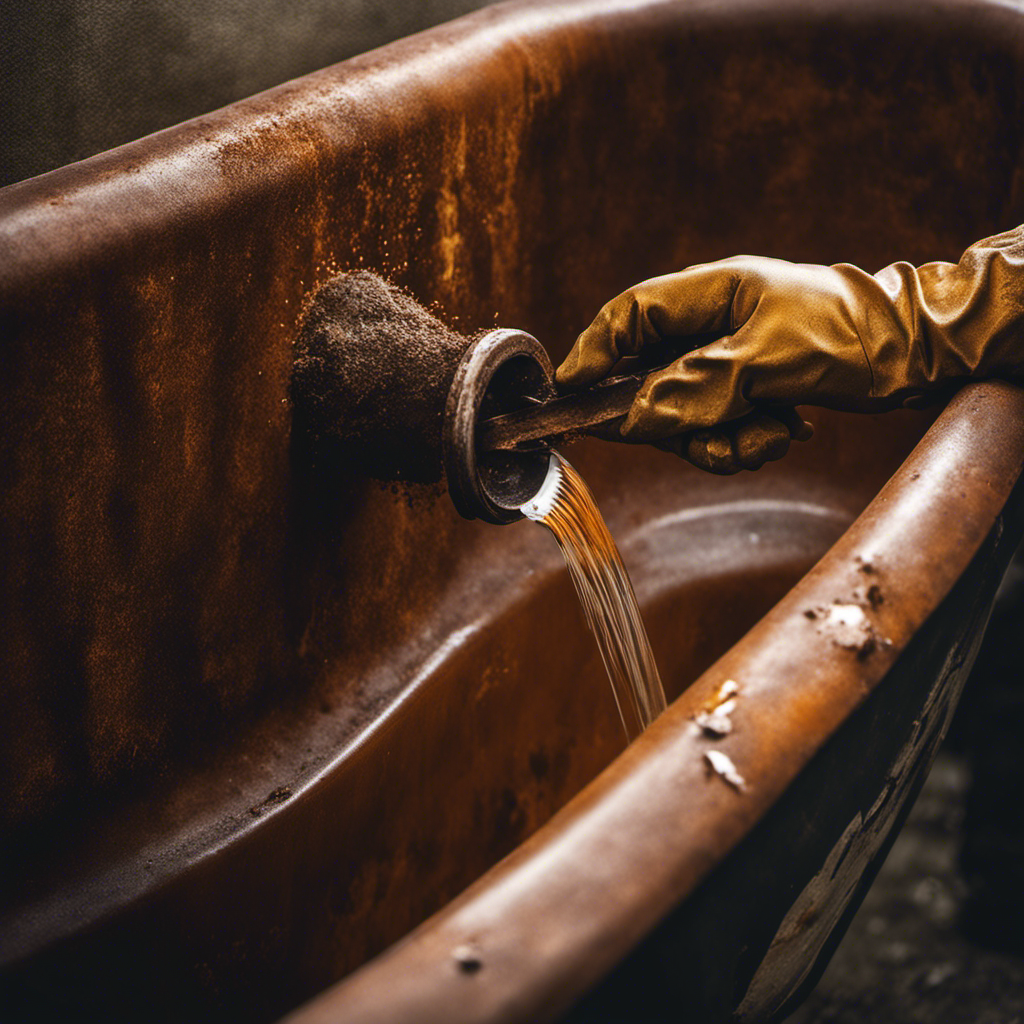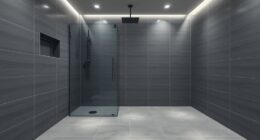I’ve dealt with my fair share of annoying bathtub clogs, but nothing compares to the frustration of a hair-clogged drain. It’s as if the hair has built a fortress, blocking any hope of a relaxing bath.
But fear not, because I’ve discovered the ultimate solution to this hairy problem. In this article, I’ll guide you through the step-by-step process of unclogging your bathtub drain with hair. Say goodbye to those clogging woes and hello to a smooth-flowing drain!
Key Takeaways
- Slow or no water drainage and gurgling sounds are signs of a clogged bathtub drain with hair.
- Hair is one of the main causes of clogged drains, leading to blockages.
- Necessary tools for unclogging include gloves, a drain snake, and a drain cleaner specifically formulated to dissolve hair.
- Clearing the hair clog can be done using a plunger, drain snake, and hot water, but professional help should be sought if methods don’t work or if unsure.
Identifying the Problem
First, you’ll want to figure out where exactly the clog is located. This will help you determine the best approach to unclogging your bathtub drain.
There are several common causes of clogged drains, with hair being one of the main culprits. Over time, hair can accumulate in the drain and form a blockage.
If you notice that water is draining slowly or not at all, or if you hear gurgling sounds when water is going down the drain, these are signs of a clogged drain. Additionally, if you see water pooling around your feet while showering, it’s a clear indication of a clog.
Gathering the Necessary Tools
To gather the necessary tools for this task, you’ll need a pair of gloves and a drain snake.
Here are the steps to unclog a bathtub drain with hair effectively:
-
Choose the right drain cleaner: Before using a drain cleaner, consider the type of drain you have and the severity of the clog. For hair clogs, opt for a drain cleaner specifically formulated to dissolve hair.
-
Put on gloves: Protect your hands by wearing a pair of gloves. This will prevent any potential contact with bacteria or chemicals.
-
Use a drain snake effectively: Insert the drain snake into the drain, pushing it slowly until you feel resistance. Rotate the snake clockwise to catch the hair clog. Once caught, pull out the snake slowly to remove the clog.
Removing the Drain Cover
Once you’ve gathered the necessary tools, it’s time to remove the drain cover.
Start by locating the screws that secure the cover in place. Using a screwdriver, carefully unscrew and remove them. Set the screws aside in a safe place, as you will need them later when replacing the drain cover.
Once the screws are removed, gently lift the drain cover off the drain opening. Be cautious not to damage the cover or the surrounding area.
With the drain cover removed, you can now clean it thoroughly to remove any hair or debris that may have accumulated. Use a brush or a cloth to wipe away the dirt and grime.
Once the drain cover is clean, you can either reinstall it or replace it with a new one if necessary. To reinstall, simply place the cover back over the drain opening and secure it with the screws you previously removed.
Clearing the Hair Clog
Now that you’ve removed the drain cover, let’s focus on clearing the clog caused by hair. Here are the steps to follow:
-
Use a plunger: Place the plunger over the drain and create a tight seal. Push and pull vigorously to dislodge the hair clog.
-
Try a drain snake: Insert the drain snake into the drain and rotate it to catch onto the hair. Pull out the snake carefully, removing the hair along with it.
-
Flush with hot water: Boil a pot of water and pour it down the drain. The hot water will help dissolve any remaining hair and clear the clog.
Remember, if these methods don’t work or if you’re unsure, it’s best to seek professional help to prevent further damage to your plumbing system.
Now, let’s move on to preventing future clogs.
Preventing Future Clogs
One way you can avoid future clogs is by using a drain cover to catch any debris before it goes down the drain.
A drain cover, also called a drain strainer, is a simple yet effective tool for maintaining drain cleanliness. It is designed to fit over the drain opening and prevent hair, soap scum, and other debris from entering the pipes.
By using a drain strainer, you can significantly reduce the amount of unwanted substances that accumulate in your drains, ultimately preventing clogs from occurring in the first place.
It is important to regularly clean the drain cover to ensure its optimal functionality. Simply remove the cover, clean off any trapped debris, and reattach it to the drain.
This simple maintenance step will go a long way in keeping your drains clog-free.
Frequently Asked Questions
How Do I Know if My Bathtub Drain Is Clogged With Hair?
To determine if my bathtub drain is clogged with hair, I observe slow drainage, standing water, or unpleasant odors. To prevent hair clogs, I use drain covers and regularly clean the drain. Alternative methods to unclog a hair-filled drain include using a plunger or a drain snake.
Can I Use a Plunger to Unclog a Bathtub Drain With Hair?
Yes, you can use a plunger to unclog a bathtub drain with hair. However, if it doesn’t work, you may need to try using a drain snake to remove the hair clogs or explore natural home remedies for unclogging bathtub drains.
Is It Safe to Use Chemical Drain Cleaners to Remove a Hair Clog?
Using chemical drain cleaners to remove a hair clog in a bathtub drain raises safety concerns. These cleaners contain harsh chemicals that can be harmful to both the user and the environment.
Can I Use a Wire Hanger to Clear a Hair Clog in My Bathtub Drain?
Yes, I can use a wire hanger as an alternative to clear a hair clog in my bathtub drain. However, there are also natural remedies that can be effective in unclogging the drain.
How Often Should I Clean My Bathtub Drain to Prevent Future Clogs?
I clean my bathtub drain regularly to prevent future clogs. It is important to maintain a clean and clog-free drain. Regular cleaning helps to remove hair and debris that can cause blockages.
Conclusion
In conclusion, unclogging a bathtub drain with hair is a simple yet necessary task that can save you from future plumbing issues. By identifying the problem and gathering the necessary tools, you can take action to prevent clogs. Removing the drain cover and clearing the hair clog will restore proper drainage. Regular maintenance and prevention are key to keeping your bathtub drain clear and functioning properly. So don’t wait until it’s too late—take action now and enjoy a hassle-free bathing experience.










